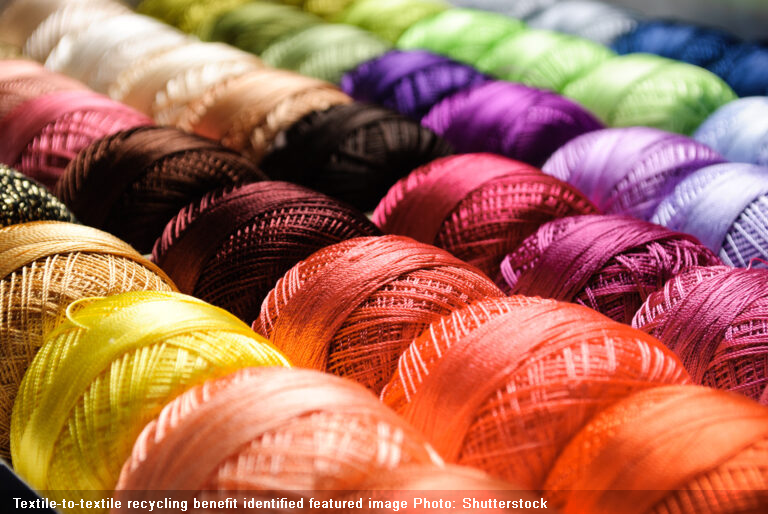
Category: SUSTAINABILITY
Country: Sweden
By Robin Latchem
25th June, 2025.
Increasing textile-to-textile recycling rates in the EU to only 10% could achieve carbon savings of 440 000 tonnes per year and conserve 8.8 billion cubic metres of water, according to a new study.
The investigation by researchers from IVL Swedish Environmental Research Institute was established by the European Commission because current levels of textile-to-textile recycling are only around 1% globally. Instead, recycling often involves ‘down-cycling’ textiles into low-grade products such as insulation.
A McKinsey report in 2022 estimated that, as fibre-to-fibre recycling technology is scaled up, the rate could reach 26% by 2030. Meanwhile, the EU strategy for more sustainable textiles wants all such products on the EU market to be durable, repairable and recyclable by 2030.
Five recycling processes
The Swedish researchers thought that increasing recycling levels to 10% by 2035 would be a conservative projection but was ambitious compared to where things stand currently. Their work addressed a scarcity of research on the environmental impacts of implementing textile-to-textile recycling at scale.
They assessed product life cycles and environmental impacts of five textile recycling processes:
-increased collection and sorting for recycling
-increased recycling
-fewer textiles incinerated and landfilled
-reduced primary fibre production
-compensation for decreased energy production due to reduced incineration
They found that reaching the 10% target for textile-to-textile recycling would have a 92% chance of resulting in reduced climate impacts and a nearly 100% chance of bringing water scarcity improvements. The average reduction in climate impact of the new approach, compared to ‘business as usual’, was 0.5%, representing a saving of 440 000 tonnes CO2 equivalent per year. The average reduction of impact on water scarcity was just over 3%, or 8.8 billion m³ world equivalent (a measure of water depletion).
More energy efficient
Despite the results suggesting greater rates of recycling, the authors stress that the recycling processes themselves need improvement by being more energy efficient and ensuring that recycled fibres are of high enough quality to replace virgin sources. They also argue that fibres produced from recycled materials need to replace primary fibres which are the current manufacturing norm – perhaps encouraged through policies such as taxes when virgin materials are used.
The study also argues that fibre-to-fibre recycling requires policy support to play a significant role in hitting European waste targets and there are barriers to be overcome in textile collection and segregation systems, which vary significantly between countries.
Courtesy: recyclinginternational.com
Copyrights © 2025 GLOBAL TEXTILE SOURCE. All rights reserved.